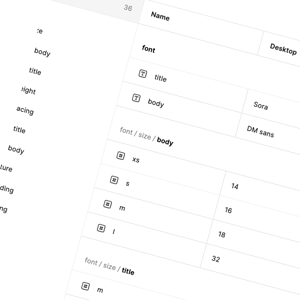Generative AI has surged forward at a breakneck pace in recent years. It doesn't seem so long ago that GenAI was the stuff of theory, of "what if…" Now, it's estimated that around 70% of enterprise-level organisations are working with large language models (LLMs), developing their own solutions and systems.
But there's a problem. Only around 33% of these LLM projects are actually entering production. So what's causing this shortfall?
The main problem is the lack of a plan. Businesses just don't have the planning and structure they need to turn exciting experimentation into something concretely useful. To put it simply, if you want to reach your destination with AI, you need a roadmap. So, how do you make this plan?

Step 1: Connect all your initiatives to measurable business goals
What do you want to achieve with your AI solution? Maybe it's a reduction in churn, improved time to market, or cost savings. This is your operational goal, and your initiative needs to connect with this.
Start by writing a one-page project brief that ties the AI initiative into this goal. This is a valuable exercise because it rewires your thinking. It not only forms those connections between goals and AI, but it also ensures that you get used to applying these structured links at every step.
Step 2: Prioritise your initiatives
You probably have a few different ideas for how you want to implement AI. Consider each one according to the following:
- How much value will it provide?
- How easily can you implement it?
- Do you have access to the data it needs?
This will help you select the first goal you want to accomplish with AI. Studies suggest that tasks like marketing and software engineering provide the clearest routes to profit during AI implementation. These may be good areas to explore, but you might have other tasks in mind.
Step 3: Get the data foundation right first
Data is the lifeblood of your AI solution. So, without great data, you can imagine what happens.
This is why you need to get the right data foundation early on. Start by mapping the data flows that are going to be driving your AI solution. Audit your data records and make sure they are labelled and deduplicated, ready for efficient processing. Put automated pipelines in place so your solutions are kept supplied with the latest data.
Make sure all this is completed to your satisfaction before you continue. Around 75% of enterprises said they were forced to increase their spending on data-lifecycle management in 2024, simply because their existing data inputs were so poor. Get ahead of the game with the right approach.
Step 4: Apply intense testing and measurement

You're now ready to run your AI solution. Use a pilot program that lasts between eight and 12 weeks so you've got enough time to gain meaningful results from your tests. Try not to overreach. If your AI solution is designed for a number of different use cases, limit this to just one during your pilot period.
Then, apply an intense set of metrics to the solution. Test its latency, accuracy, and user satisfaction levels to help you understand whether the solution is working as it should.
If the solution doesn't make the grade, send it back to the drawing board. You can't afford to try to force a half-baked solution through to live deployment; this type of shortcut just won't work.
Step 5: Make governance an intrinsic part of the solution
If you make governance an afterthought, you're going to get caught out. It's as simple as that. With regulators now accelerating their moves to implement rules and frameworks on AI, governance needs to be built into the development process itself.
This means putting together a multidisciplinary council that can oversee legal, risk, data, design, and engineering. During the pilot phase, this council will need to meet regularly to ensure comprehensive adherence to governance benchmarks. As each stage of the pilot program is completed, it should pass through a governance checkpoint. If it does not meet the threshold, it cannot progress to the next phase of development.
A lightweight but robust approach to governance keeps the project agile. It also avoids having to later go back and make expensive changes if the solution is not compliant.
Step 6: Use containerised deployment
After the successful completion of two or three pilot programs, you need to start thinking about the platform. A containerised deployment model makes the solution system-agnostic, running with any primary cloud provider.
Building retrieval layers into the platform ensures that you won't need to retrain the solution every time new information becomes available. Meanwhile, rollback scripts and blue-green deployment pipelines eliminate primary downtime during upgrades.
Everything needs to be observable via a centralised dashboard, including model outputs, latency metrics, and cost-per-request data. This means new AI solutions added to the platform can share guardrails, data connectors, and service management processes.
Step 7: Communicate with your teams
Now, it's time to communicate with your human personnel. You need to make sure that your teams view AI as a powerful digital colleague focused on things like pattern recognition and summarisation. Stress that human personnel are still vital in judgement, empathy, and exception-handling tasks, things that are not suited to AI systems.
Begin managed integration of AI solutions into common processes. Support this with training on how your teams can utilise AI helpers in their everyday tasks, like delivering customer service.
Step 8: Develop your roadmap for ongoing effectiveness
Your roadmap needs to keep evolving. Make time to regularly revisit your use cases and prioritise which ones you need to focus on next. Devote some of your budget to use case discovery and research so you remain ahead of the curve with AI deployment.
Remember that your roadmap is an organic document, so continue to review it and help it evolve to meet ongoing business needs.
Closing thoughts
Deploying AI effectively means dreaming big but staying disciplined and on task. By following the above steps, you're setting yourself free to envisage new and innovative methods of deployment. But at the same time, you're connecting your project intrinsically to specific goals. Measuring your progress, building governance into the process, and adopting a policy of transparency and continuous improvement will turn today's ideas into tomorrow's competitive advantages.























